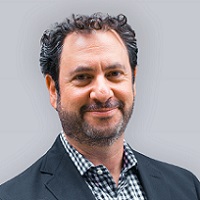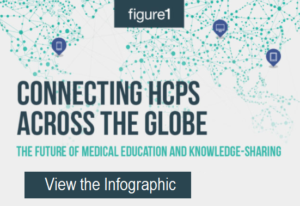 By Josh Wildstein, CEO, Figure 1
By Josh Wildstein, CEO, Figure 1
Twitter: @Figure1
COVID-19 and the subsequent events of 2020 changed every industry, but perhaps none more profound than the medical industry. While the beginnings of telehealth emerged decades ago, the sophistication with which we operate today is still relatively new. As a result of the pandemic, telehealth experienced more rapid adoption and acceptance among both doctors and patients and increased the demand for more digital-first communications, such as video conferencing. Allowing patients to receive care virtually limited in-office time to reduce the risk of viral spread, as the world was forced to reimagine care delivery in a stay-at-home state of emergency.
There are many more virtual care options and remote apps for patients to receive care and remotely monitor and manage their health, but what about technologies that are designed to provide fast, efficient communication between doctors and enable them to make better treatment decisions? It’s an area of the healthcare digital transformation that is on the cusp of explosive growth as providers face mounting challenges and are hungry for better tools that make it easier for them to do their job and to share, discuss and collaborate to better diagnose and treat their patients. Alongside balancing patient needs, digital health solutions have the power to also aid in tackling physician burnout, meet clinicians’ needs for continuing education, and enable peer-to-peer clinical decision support. Busy doctors, nurses, and other healthcare professionals need digital-first tools that help make their lives and jobs easier.
Physician Burnout as A Public Crisis
There is a standard joke about how doctors have bad handwriting—we’ve all heard it—but its origins seem to stem from the amount of paperwork physicians fill out. While paperwork is largely computer-based now, and not impacted by imprecise penmanship, it is no less time-consuming. A 2016 study found that physicians do approximately two hours of paperwork for every one hour of face-time with patients.
Alongside mountains of paperwork, physicians are being pushed to see more patients than ever before—and this was true before COVID-19. Healthcare is still largely volume-based versus value-based, meaning doctors need to see more patients in less time to be profitable. This does not ensure the highest quality care for their patients or quality of life for the physicians themselves. Those in this field are saddled with a weighty sense of responsibility for people’s well-being, piles of paperwork, long hours, and student debt—It’s no wonder we have a shortage of healthcare workers—and COVID-19 only exacerbated an existing problem.
During the pandemic, telehealth skyrocketed while elective and preventative visits saw a sharp decline. The American Hospital Association estimated an average loss of revenues to US hospitals of $50.7 billion per month during the first four months of the pandemic. However, telehealth saw a 154% increase in March 2020 alone. Practices were able to expand care and optimize services to meet patient’s needs. But what about the needs of healthcare professionals? Physician burnout is a public crisis; one we can no longer ignore.
 Increasing Online Education for Physicians
Increasing Online Education for Physicians
In addition to all of the existing stressors, healthcare workers are required to keep up with their continuing education each year. It’s hard for them to keep up with the demands of their day-to-day schedule, much less carve out time to attend courses and study.
A large portion of continuing education is set up through medical conferences, which add travel time to the time spent away from patients. But these conferences, where they get the majority of their peer-to-peer education and connection, are largely on hold. This inhibits the sharing of medical knowledge and collegial networking, as well as the ability to socialize and build connections with those who understand the struggles and successes of the medical field. Healthcare professionals need digital solutions to bypass these challenges.
A Stanford Medicine’s 2020 Health Trends Report highlights the rise of the data-driven physician and found nearly half of all physicians (47%) and three-quarters of medical students (73%) said that they are currently seeking out additional training or classes to better prepare themselves for innovations in health care. Physicians and medical personnel are becoming more proactive about the transformations taking place in their industry—they are ready for technological advancement.
In a world where pressures for doctors are at an all-time high, and the power of telehealth is gaining unprecedented momentum, now is the time for the data-driven physician with technology that aids collaborative care decisions. We are on the verge of meaningful change to enable healthcare professionals with the peer-to-peer digital tools they need not only for professional development, but perhaps more importantly, to enable the collegial collaboration and case-based discussions they need to inform the best care for patients. Real-time, digital-first peer-to-peer clinical decision support tools have the power to keep healthcare providers’ finger on the pulse of medicine and to propel us into the next generation of modern medicine for faster, more accurate diagnosis and treatments, and ultimately, to improve outcomes at a global scale. This type of fast, convenient consulting and collaboration is a vital step in overcoming the challenges doctors face in today’s demanding medical environment.
